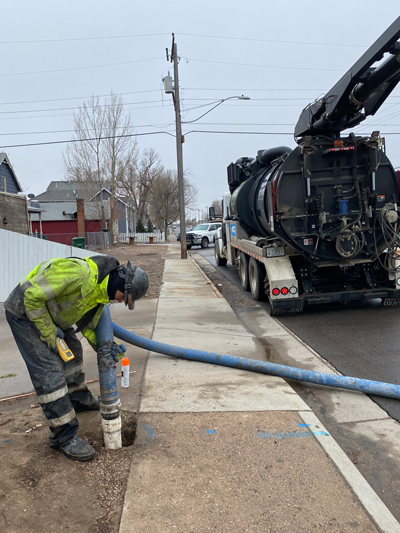
Historically in Greeley, lead piping was sometimes used in the service lines that connect individual properties to the water main. This means that older homes in Greeley may still have service lines that contain lead. In December 2021, the Environmental Protection Agency released the Lead and Copper Rule Revision (LCRR), that strengthens the regulatory framework governing lead in drinking water. One of the key elements of the LCRR is the requirement for water systems to develop and maintain a service line inventory, including material information for both the public and privately owned portions of the system. The LCRR also requires that any lead or galvanized steel lines downstream of historical lead lines must also be removed.
The Lead Service Line Inventory & Replacement Project will help the City of Greeley provide the best possible water to our customers, and to stay ahead of the regulatory framework. The project will identify the service line material of homes through potholing and other investigation techniques. Where lead or galvanized steel downstream of historical lead service lines are identified, the City will replace such lines at no cost to the customer. This project is critical for the City of Greeley as we meet changing regulations and continue our mission to provide high quality, safe, and reliable drinking water to customers.
- Alternatives Considered:
(a) Leaving lead service lines in place is not a viable option and will leave the city open to many water quality violations based on testing results.
(b) Leaving lead service in place and increasing anti-corrosion treatment to treated water is an expensive ongoing solution. The likely treatment would be orthophosphate which in addition to increasing treatment costs for the city’s water would also increase treatment costs for the city wastewater as wastewater regulations limit the amount of phosphate that can be in our discharged water, again this would be an expensive ongoing cost.
Both alternatives ( (a) and (b) ) are considered less than ideal from a public health perspective and the Colorado Department of Public Health and the Environment is encouraging water providers to identify and replace lead service lines in the water distribution system.
- Preferred Alternative: The preferred alternative is to identify and replace water service lines that contain lead or galvanized steel downstream of historical lead. While this is an expensive capital project, it is a one-time expense that with every identification and replacement improves the water quality for the system. Total cost of the project is $22,805,240.
- Any projected rate increases: Each year the department models the future 10 years of capital and operating expenses and plans out the necessary rate and other revenue needed to meet the costs. This project is included in that model and so the effect of the project on customer rates is minimal and has already been taken into account. Receiving funding through the SRF loan and potentially the loan forgiveness will reduce the cost of the capital funding for this project and ease the demand on revenue arising from it.
- Construction will be occurring in already disturbed areas and the environmental impact is minimal.